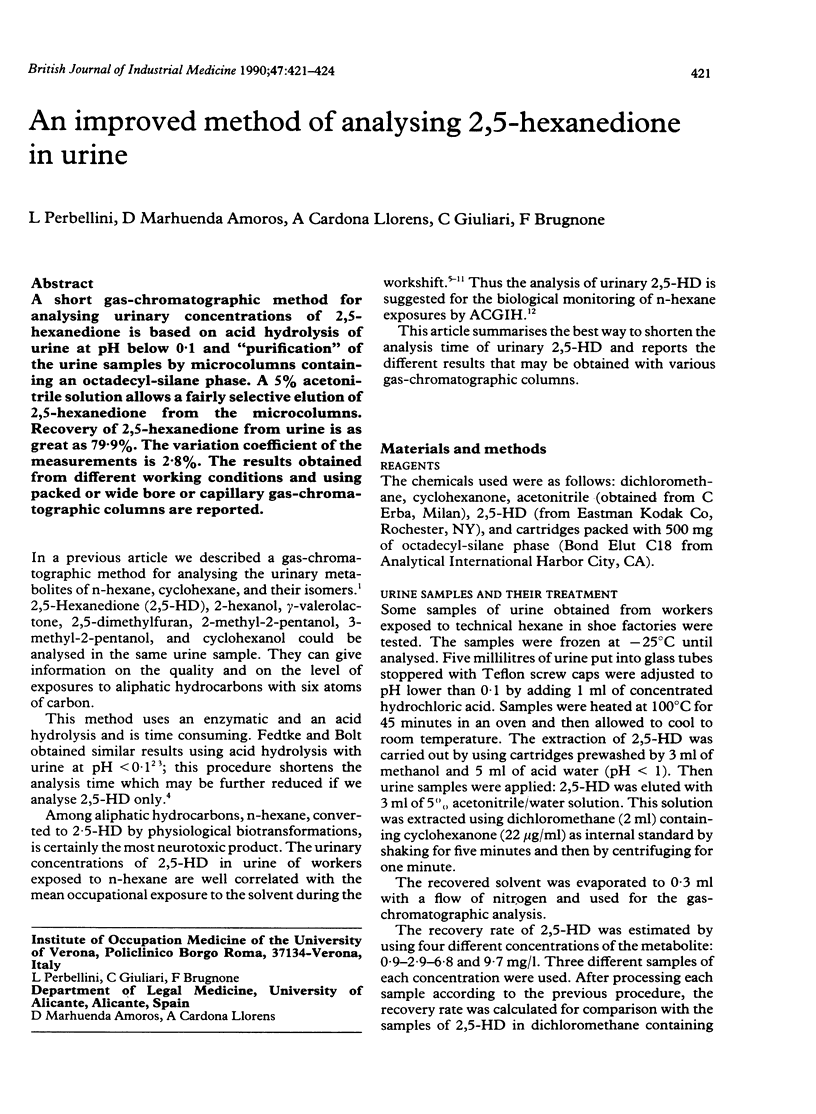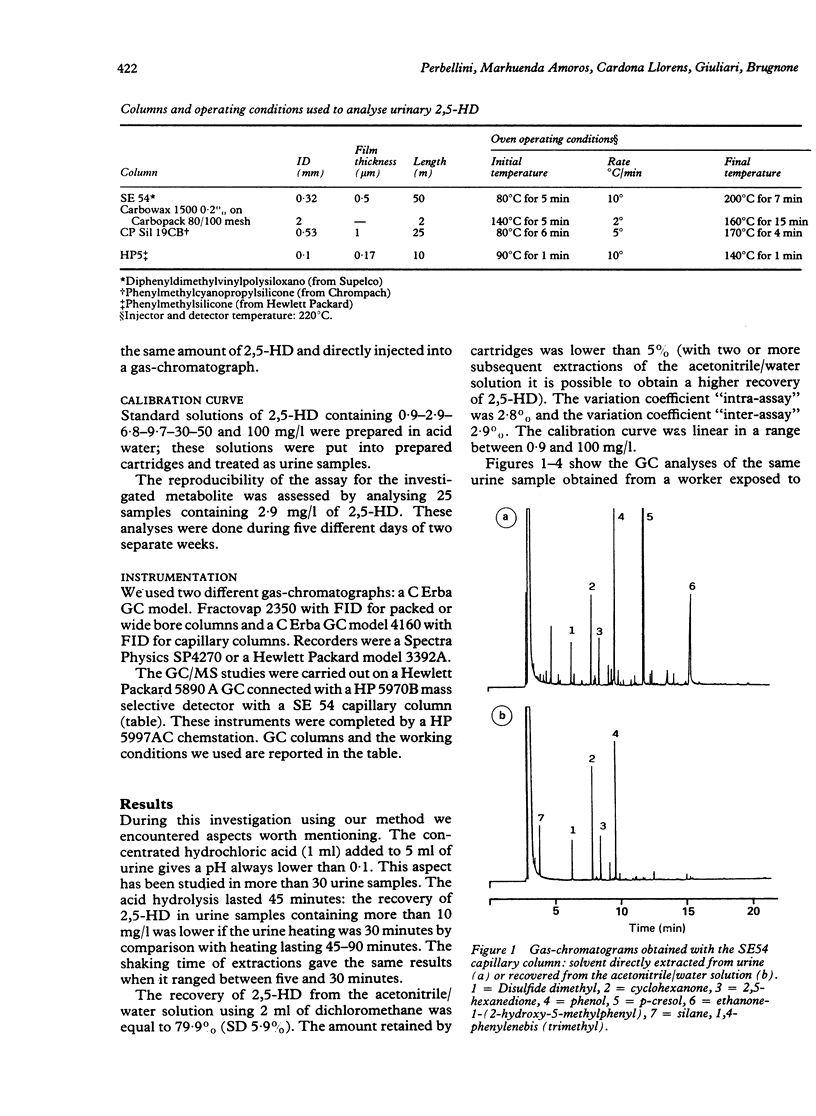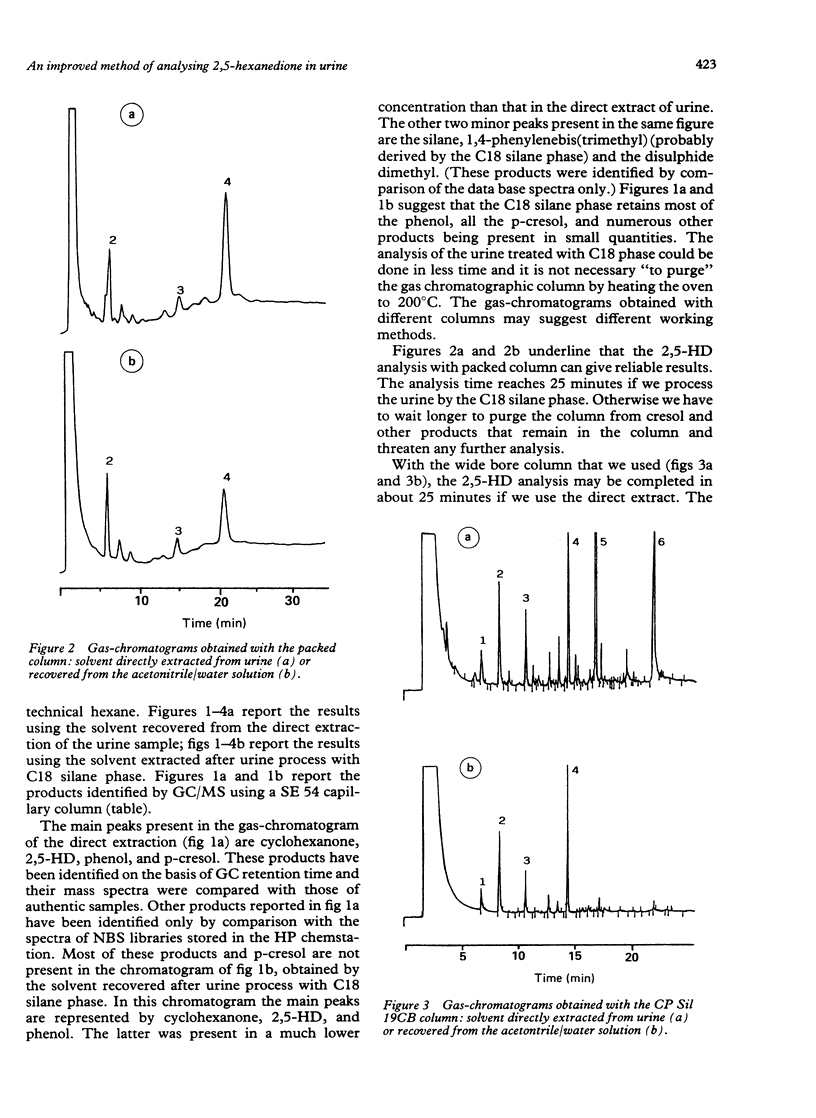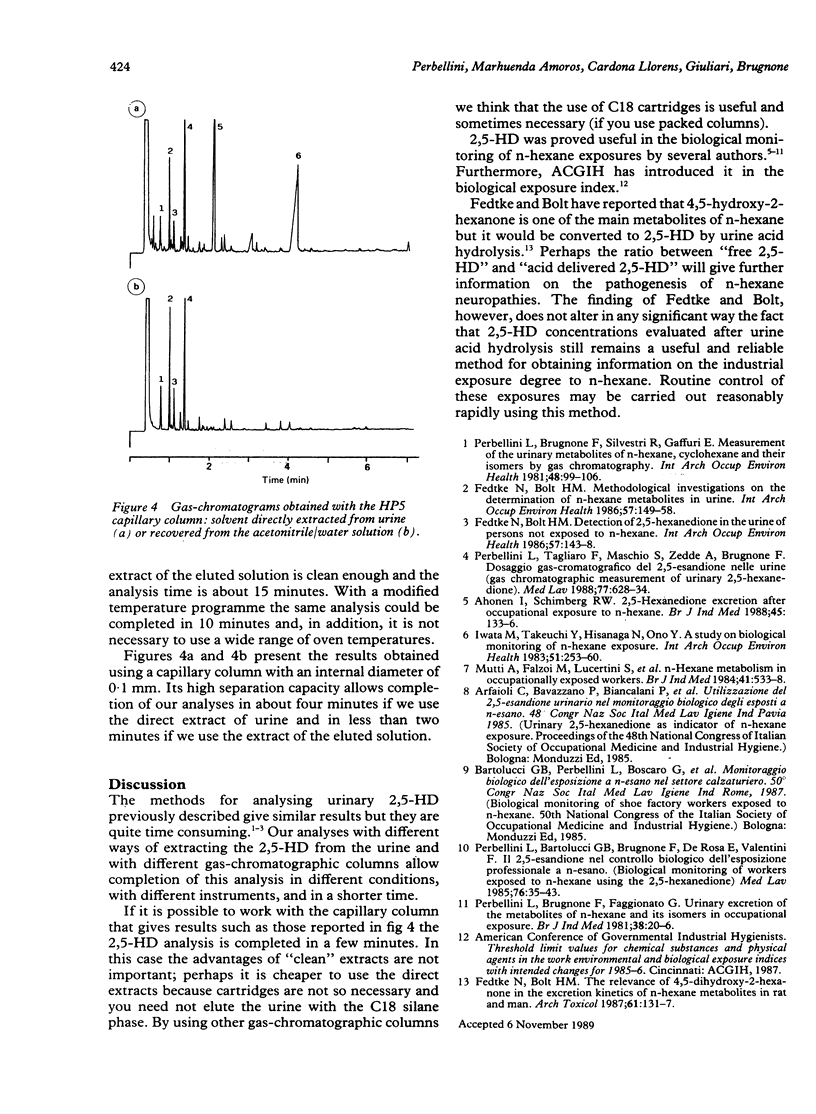Abstract
A short gas-chromatographic method for analysing urinary concentrations of 2,5-hexanedione is based on acid hydrolysis of urine at pH below 0.1 and "purification" of the urine samples by microcolumns containing an octadecyl-silane phase. A 5% acetonitrile solution allows a fairly selective elution of 2,5-hexanedione from the microcolumns. Recovery of 2,5-hexanedione from urine is as great as 79.9%. The variation coefficient of the measurements is 2.8%. The results obtained from different working conditions and using packed or wide bore or capillary gas-chromatographic columns are reported.
Full text
PDF



Selected References
These references are in PubMed. This may not be the complete list of references from this article.
- Ahonen I., Schimberg R. W. 2,5-Hexanedione excretion after occupational exposure to n-hexane. Br J Ind Med. 1988 Feb;45(2):133–136. doi: 10.1136/oem.45.2.133. [DOI] [PMC free article] [PubMed] [Google Scholar]
- Fedtke N., Bolt H. M. Detection of 2,5-hexanedione in the urine of persons not exposed to n-hexane. Int Arch Occup Environ Health. 1986;57(2):143–148. doi: 10.1007/BF00381382. [DOI] [PubMed] [Google Scholar]
- Fedtke N., Bolt H. M. Methodological investigations on the determination of n-hexane metabolites in urine. Int Arch Occup Environ Health. 1986;57(2):149–158. doi: 10.1007/BF00381383. [DOI] [PubMed] [Google Scholar]
- Fedtke N., Bolt H. M. The relevance of 4,5-dihydroxy-2-hexanone in the excretion kinetics of n-hexane metabolites in rat and man. Arch Toxicol. 1987 Dec;61(2):131–137. doi: 10.1007/BF00661371. [DOI] [PubMed] [Google Scholar]
- Iwata M., Takeuchi Y., Hisanaga N., Ono Y. A study on biological monitoring of n-hexane exposure. Int Arch Occup Environ Health. 1983;51(3):253–260. doi: 10.1007/BF00377756. [DOI] [PubMed] [Google Scholar]
- Mutti A., Falzoi M., Lucertini S., Arfini G., Zignani M., Lombardi S., Franchini I. n-Hexane metabolism in occupationally exposed workers. Br J Ind Med. 1984 Nov;41(4):533–538. doi: 10.1136/oem.41.4.533. [DOI] [PMC free article] [PubMed] [Google Scholar]
- Perbellini L., Bartolucci G. B., Brugnone F., De Rosa E., Valentini F. Il 2,5-esandione nel controllo biologico dell'esposizione professionale a n-esano. Med Lav. 1985 Jan-Feb;76(1):35–43. [PubMed] [Google Scholar]
- Perbellini L., Brugnone F., Faggionato G. Urinary excretion of the metabolites of n-hexane and its isomers during occupational exposure. Br J Ind Med. 1981 Feb;38(1):20–26. doi: 10.1136/oem.38.1.20. [DOI] [PMC free article] [PubMed] [Google Scholar]
- Perbellini L., Brugnone F., Silvestri R., Gaffuri E. Measurement of the urinary metabolites of N-hexane, cyclohexane and their isomers by gas chromatography. Int Arch Occup Environ Health. 1981;48(1):99–106. doi: 10.1007/BF00405936. [DOI] [PubMed] [Google Scholar]
- Perbellini L., Tagliaro F., Maschio S., Zedde A., Brugnone F. Dosaggio gas-cromatografico del 2,5-esandione nelle urine. Med Lav. 1986 Nov-Dec;77(6):628–634. [PubMed] [Google Scholar]


